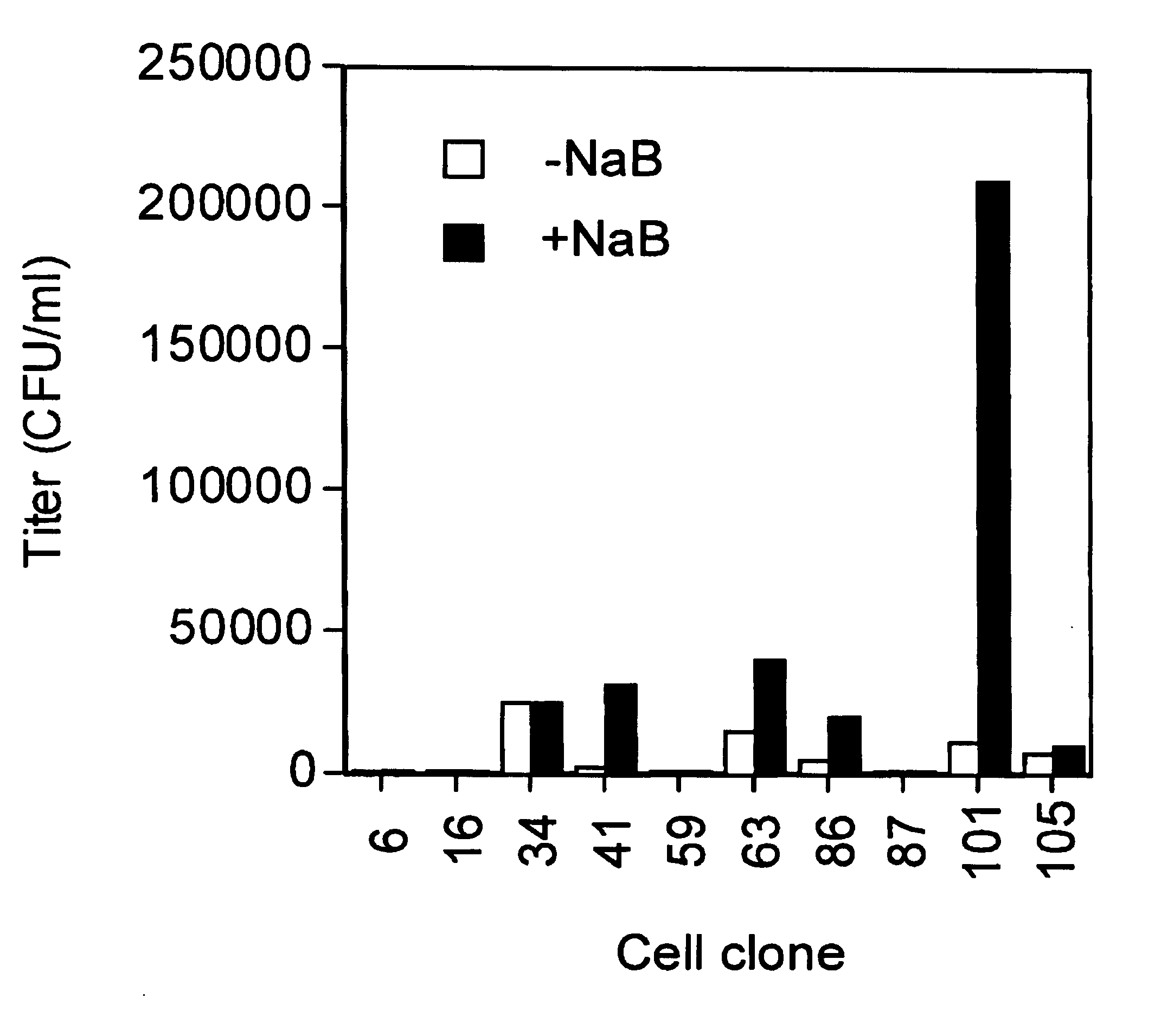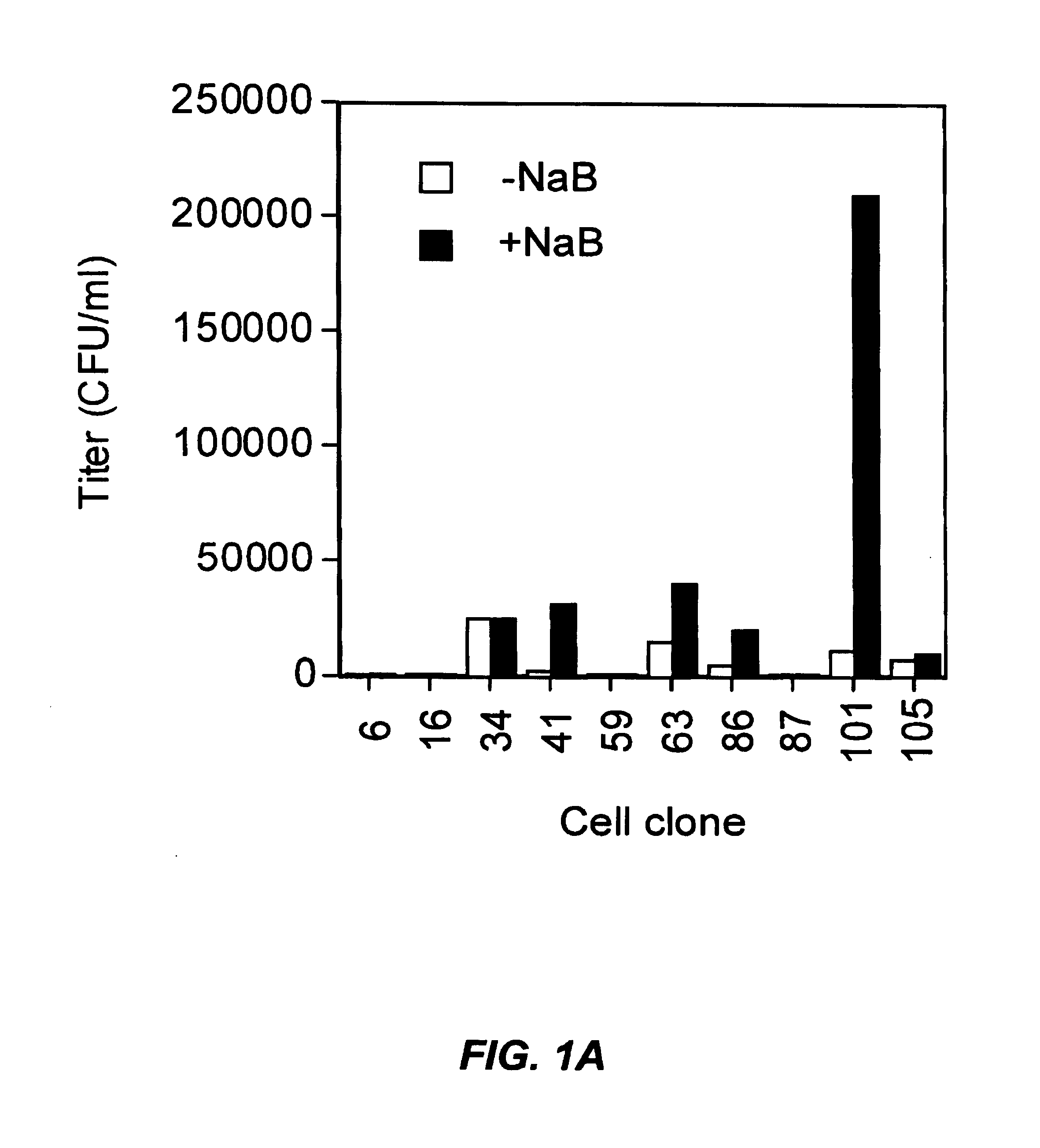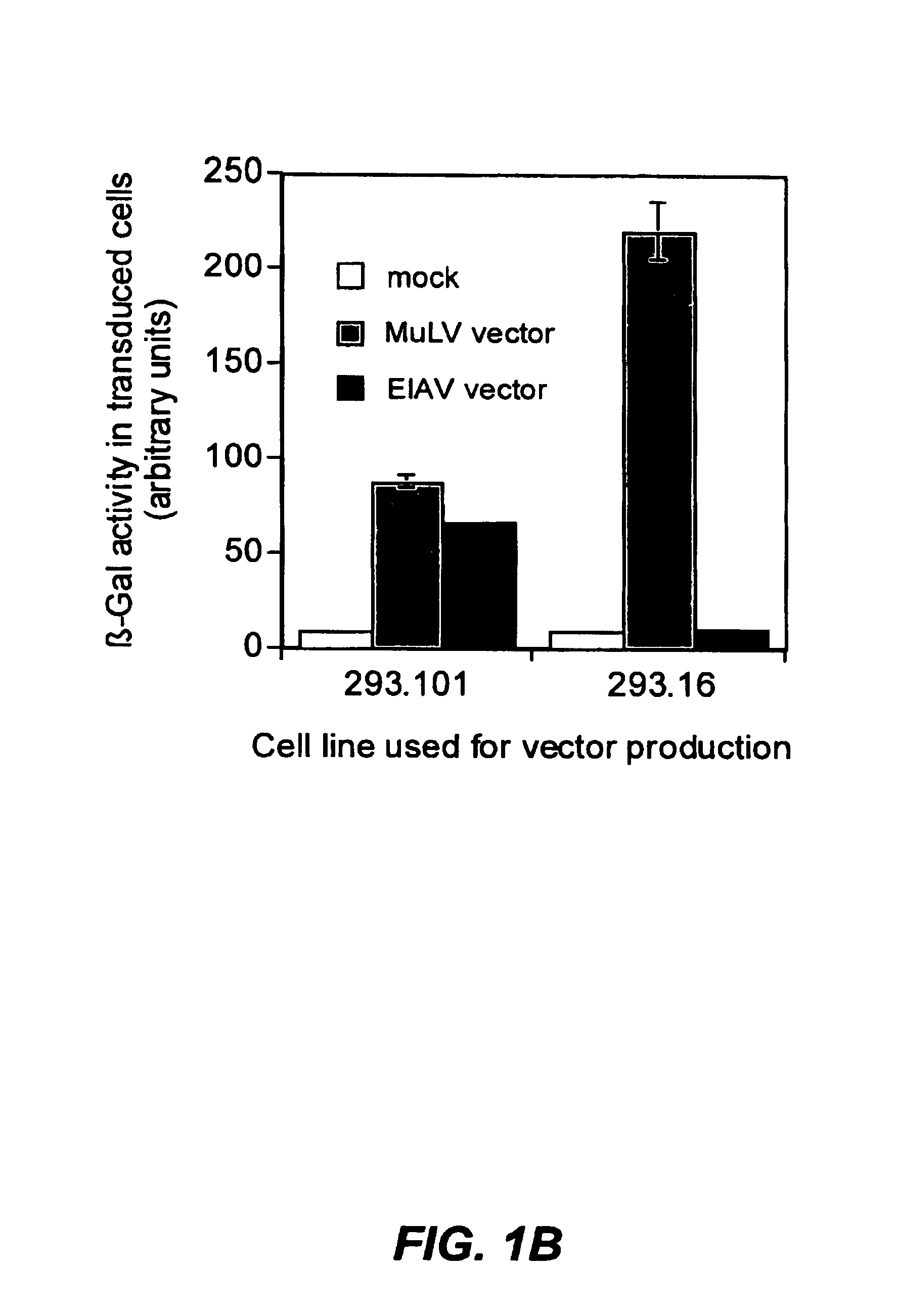Methods for producing high titre vectors and compositions used in such methods
a vector and high-titer technology, applied in the field of packaging and producer cell lines, can solve the problems of complex situation, inability to predict, and inability to predict, and achieve the effects of reducing the chance of homologous recombination events, reducing the amount of sequence overlap, and improving the safety profile of the producer system
- Summary
- Abstract
- Description
- Claims
- Application Information
AI Technical Summary
Benefits of technology
Problems solved by technology
Method used
Image
Examples
example 1
Identification of Clonal Cell Lines for Efficient EIAV Vector Production.
[0428]EIAV packaging cells were derived following a series of steps in which clonal cell lines were derived and tested for various properties desirable in a vector production system. As a starting point, a library of 105 clonal HEK 293-based cell lines was tested for high transfection efficiency and efficient vector production. To do this, a three-plasmid system was used to generate EIAV vectors in each clonal cell line. This consisted of the following:[0429]1) A non-infectious EIAV protein expression cassette plasmid, pEV53 (WO 98 / 51810), used to provide, in trans, the structural and regulatory proteins required for vector production;[0430]2) The plasmid encoding the EIAV vector, in which a CMV promoter drove production of the vector RNA. The vector RNA contained cis-acting elements required for packaging, reverse transcription and integration of the vector as well as either cassettes for expression of either ...
example 2
[0438]Construction of stable packaging cell lines
[0439]Human cell lines modified to express EIAV gag / pol
[0440]The clonal 101 cell line described above was chosen as the starting material for making stable producer lines, and termed 293.101. This cell line was transfected using a standard calcium phosphate procedure with the EIAV gag-pol expression cassette pEV53B.
[0441]pEV53B is similar to pEV53A (WO 98 / 51810) except that all EIAV leader sequences up to 3 nt upstream of the major splice donor have been removed. To construct pEV53B the gag gene and part of pol was amplified from pEV53 by PCR using the primers
[0442]
(SEQ ID NO: 18)5′-TTTGGCGCGCCAGGTAAGATGGGAGACCCTTTGAC-3′(forward)and(SEQ ID NO: 19) 5′-CTACTTGATCCTTCTCCTTGAC-3′.(reverse)
[0443]An AscI restriction site (underlined) was included in the forward primer for cloning purposes. The ATG start codon for gag in the forward primer is indicated in bold and EIAV sequences are shown in italic for the forward primer. The resulti...
example 3
Induction of EIAV Gag / Pol Expression by Sodium Butyrate and Doxycycline
[0457]FIG. 12 shows the expression of EIAV gag / pol from a wild type open reading frame in BiG-45 cells and the induction obtained following treatment with sodium butyrate and doxycycline. In these experiments a clonal derivative of BiG-45 cells (clone 8Z.20; 5×106 cells / 60-mm dish) expressing pONY8.0 Z was treated with 10 mM sodium butyrate and / or 1.5 μg / ml doxycycline for 24 hr at 37° C.
Results 3
Panel A
[0458]Panel A shows the reverse transcriptase activity appearing in the cell-free supernatant as a measure of reverse transcriptase activity. It shows that sodium butyrate treatment has a significant effect on gag / pol expression, as measured by reverse transcriptase activity appearing in the medium. Also indicated are the fold-induction in reverse-transcriptase activity relative to that observed when no treatments were given. Virion associated reverse transcriptase activity was increased about 30-fold. Doxycycline...
PUM
| Property | Measurement | Unit |
|---|---|---|
| Temperature | aaaaa | aaaaa |
| Time | aaaaa | aaaaa |
| Toxicity | aaaaa | aaaaa |
Abstract
Description
Claims
Application Information
 Login to View More
Login to View More - R&D
- Intellectual Property
- Life Sciences
- Materials
- Tech Scout
- Unparalleled Data Quality
- Higher Quality Content
- 60% Fewer Hallucinations
Browse by: Latest US Patents, China's latest patents, Technical Efficacy Thesaurus, Application Domain, Technology Topic, Popular Technical Reports.
© 2025 PatSnap. All rights reserved.Legal|Privacy policy|Modern Slavery Act Transparency Statement|Sitemap|About US| Contact US: help@patsnap.com



